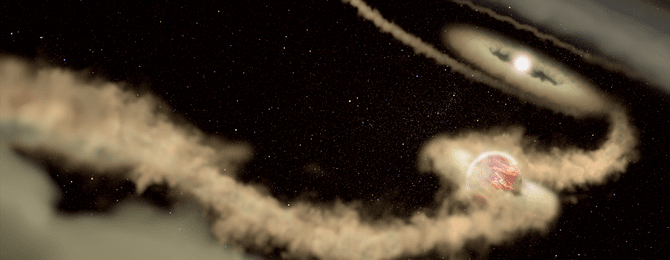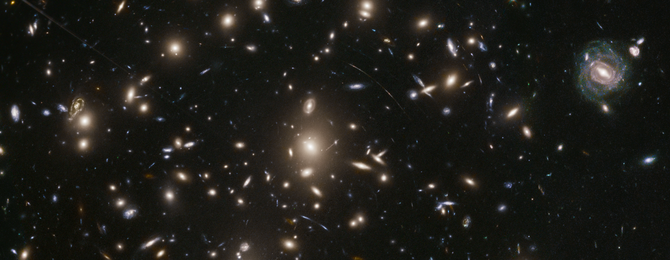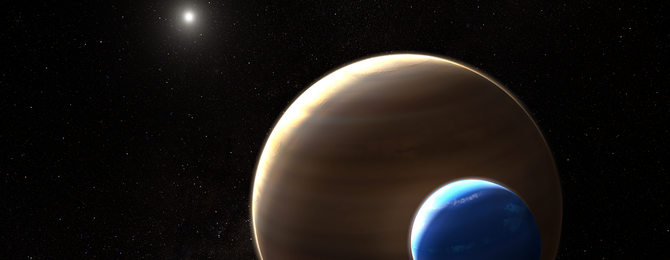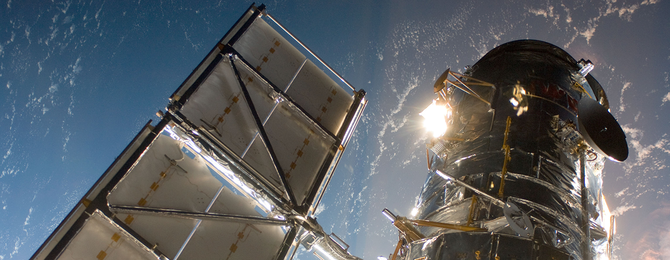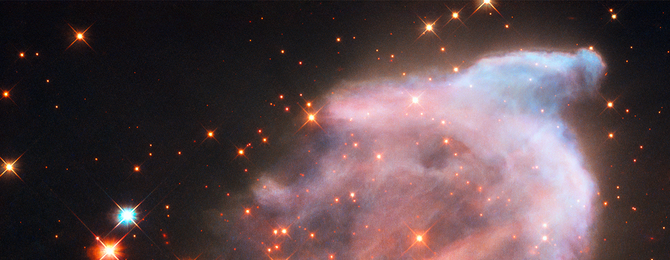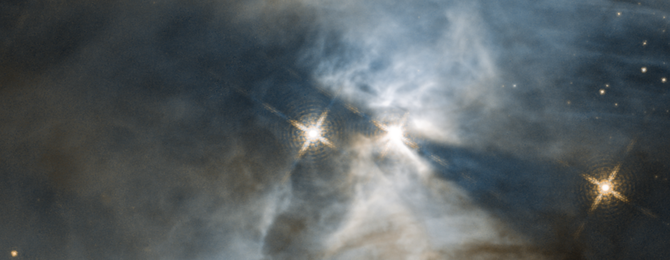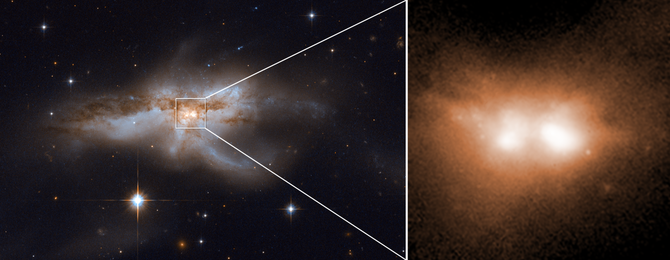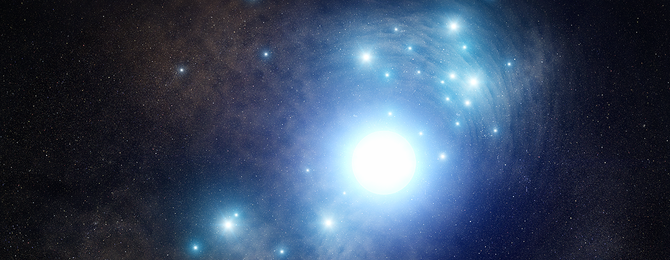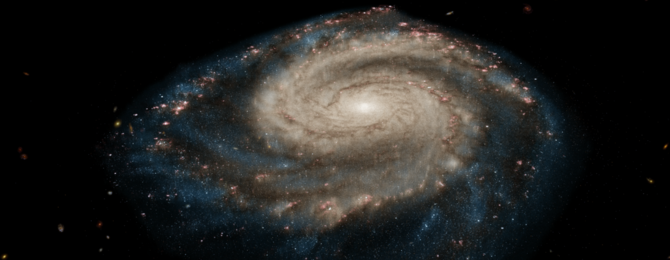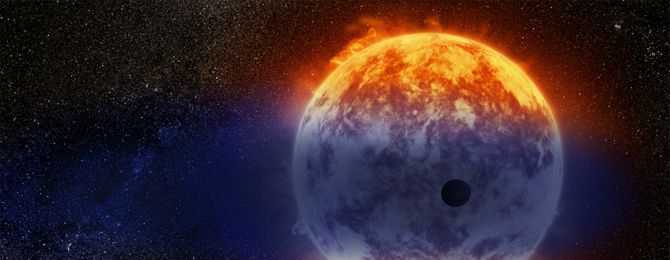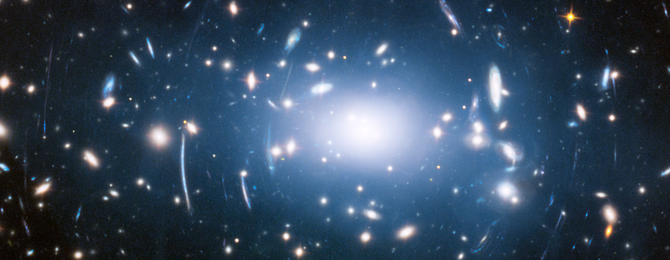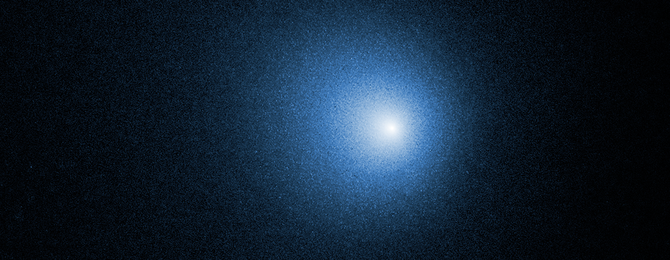Robby
Helper Bot
Galaxy Blazes with New Stars Born from Close Encounter

One doesn't need a Ph.D. in astrophysics to recognize there is something odd-looking about this otherwise beautiful galaxy, NCG 4485. Like the Batman character Two-Face, one side looks normal, but the other side looks contorted with a firestorm of star formation going on. Why the colorful asymmetry in an island star city many thousands of light-years across? The clue is off the edge of the photo. It's another galaxy, NGC 4490, that swept by NGC 4485 millions of years ago. The gravitational taffy pull between the two galaxies compressed interstellar gas to trigger a flurry of new star birth as seen in the abundance of young blue stars and pinkish nebulas. So, out of a near-collision between two galaxies comes stellar renewal and birth. It's a trademark of our compulsive universe where even things as big as galaxies can go bump in the night.
(More at HubbleSite.com)

One doesn't need a Ph.D. in astrophysics to recognize there is something odd-looking about this otherwise beautiful galaxy, NCG 4485. Like the Batman character Two-Face, one side looks normal, but the other side looks contorted with a firestorm of star formation going on. Why the colorful asymmetry in an island star city many thousands of light-years across? The clue is off the edge of the photo. It's another galaxy, NGC 4490, that swept by NGC 4485 millions of years ago. The gravitational taffy pull between the two galaxies compressed interstellar gas to trigger a flurry of new star birth as seen in the abundance of young blue stars and pinkish nebulas. So, out of a near-collision between two galaxies comes stellar renewal and birth. It's a trademark of our compulsive universe where even things as big as galaxies can go bump in the night.
(More at HubbleSite.com)

